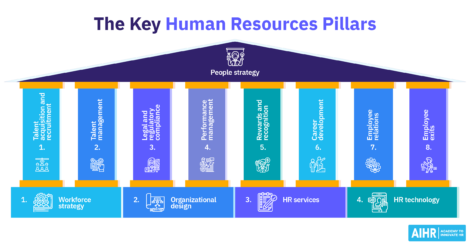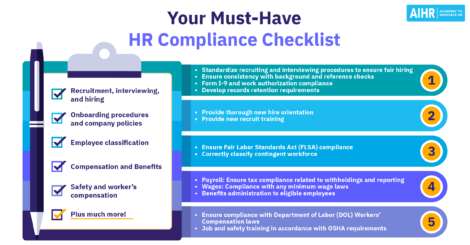What Does High Turnover Mean? Turnover Rates and Causes

High turnover can be both a good and a bad thing. When it comes to sales value, for instance, you want your turnover to go through the roof. When it comes to your employees, however, high turnover is something you want to avoid. There’s the obvious operational hassle of finding and hiring someone else and the extra workload and responsibilities for the rest of the team.
But the impact of high employee turnover goes beyond operational inconveniences. When people constantly leave the organization, it has an impact on employee morale and productivity and eventually on the company’s products and services. This means that high turnover costs heaps of money too.
Exact numbers differ depending on the type of job and country, but research shows that it costs companies between 6 and 9 months of an employee’s salary to replace them. And that’s just the direct cost of turnover. Because then there is whatever you’ve spent on training and onboarding, interview expenses, advertising, etc.
In this article, we’ll take a thorough look at high employee turnover. We’ll discuss turnover rates, examples of high turnover jobs, and causes.
What’s in?
What does high turnover mean? A definition
What is a high turnover rate?
High turnover rate causes
Examples of high turnover jobs
3 Ways to reduce high turnover
On a final note
FAQ
What does high turnover mean? A definition
In an HR context, (high) turnover refers to the number of workers who leave the organization. In most cases, these leavers need to be replaced by new employees. Employee turnover often is a result of poor hiring decisions and bad management.
Employee turnover happens due to termination, people leaving for a job they believe is better, or because they feel they couldn’t develop their career within your company.
what is a high turnover rate, what drives turnover and how can you reduce it?
What is a high turnover rate?
A high turnover rate means that many of your employees – more than what’s expected in your line of business – have quit the organization over a certain period of time. What’s considered a high turnover rate depends on the industry you’re in. Different industries and countries have different expected turnover rates.
In the UK, for example, the occupational group with the highest turnover rate today is Sales & Marketing at 31%.

Image source
In the US, on the other hand, the industries with the highest turnover rates are Staffing (352%) and Hotels (300%).

Image source
There are numerous reports that show average turnover rates by industry (and/or country). So one very easy way to find out how your organization is doing is simply by checking out the stats; if your number is (way) above average, you probably have a high turnover rate to deal with.
In order to compare your turnover rate with that of the industry, you need to be able to calculate your rate first. This is not as simple as you may think. Google ‘how to calculate employee turnover’ and you’ll get various different formulas. For an in-depth explanation and best practice to measuring employee turnover, check out the article How to Calculate Employee Turnover Rate from our friends at Analytics in HR.
High turnover rate causes
In 2000, three scientists combined all existing literature on employee turnover. This resulted in a meta-analysis of over 60.000 employees. Their findings are presented in the infographic below (click on the image to zoom). It shows us what variables drive employee turnover and can cause a high turnover rate. We’ll explain some of these variables below.

Stress
Stress is why people end up leaving their job. Highly stressful work environments usually have a higher turnover rate than environments with less stress.
Demographics
Demographic factors are strong indicators of turnover intentions. People who are married or people with children, for instance, are less likely to leave than someone who isn’t married or doesn’t have children.
Job content
This is about how people experience their job. Elements that play a role here are the level of routine that comes with the job (a lot of routine usually means a higher turnover rate) and the possibility for a promotion (if someone knows they might get a promotion they’re less likely to leave).
Examples of high turnover jobs
Since we’ve looked at some of the causes of employee turnover, we can now highlight a few examples of high turnover jobs. Exact rates differ per country and industry, but jobs that have a ‘guaranteed’ high turnover include:
- Retail jobs: Working in retail is tough. It often means working long hours, evenings and weekends included, wages tend to be low and have you tried being on your feet all day? It’s physically exhausting. Apart from these practical aspects, the retail industry as such is changing. The sector is transforming from brick-and-mortar stores to e-commerce which means fewer people on the floors.
- Hospitality jobs: The hospitality industry is much like the retail sector when it comes to its working conditions. The hours are irregular, the customers demanding and many hospitality jobs are physically tough too.
- Tech/IT jobs: This one may come a little bit more as a surprise but believe it or not, there is a fairly high turnover rate in IT. There’s a strong demand for software developers and often a shortage of skilled people which pushes companies to ask (too) much of their employees. Other tech jobs such as user experience designers and data analysts also have high turnover rates. According to LinkedIn, this is probably due to the fact that employers and offers are becoming more competitive.
- Sales jobs: If you’re a good salesperson, you can sell anything, including yourself. So it’s no surprise really that salespeople tend to go there where they can make the most money – which leads to high employee turnover in this type of job.
Other often-named high turnover jobs are jobs in education, call center agents and customer service representatives and child-care workers.

3 Ways to reduce high turnover
At the end of the day, what we really want to know is how to reduce employee turnover, right? After all, that’s how everything gets better: employee morale and productivity, the quality of your products and services, etc.
But how do you go about reducing turnover? We’ve listed 3 ways to do so.
1. Adapt your hiring strategy
This involves so many elements that it easily justifies an article in itself. To give you an idea, however, I’ll give a few examples of how adapting your hiring strategy can help in reducing employee turnover.
- Sourcing: Are you targeting the right candidates in the right places (job boards, social media)? If you’re tracking the various sourcing channels you use this should provide you information about which channels tend to provide you the best (and worst) candidates. The big advantage of sourcing in the 21st century is that there’s heaps of technology available to help you optimize your sourcing efforts.
- Job adverts: The language you use in your job adverts determines the type of candidates that apply. Certain words or ways in which things are phrased will appeal to – or turn off – potential applicants. Here too, there is some nifty technology available to support you in stepping up your job ad writing.
- Preselection: It’s not uncommon for new hires to leave prematurely because of unmet expectations about the job, the organization, or both. One way to avoid this is by using a pre-employment assessment tool. These kinds of tools consist of various modules and use data to predict how likely it is that an applicant will succeed in the role and the organization they apply for.
2. Offer a competitive deal
You can optimize your hiring strategy all you want if you don’t offer people a competitive total package you won’t be able to hire – or keep – them. That doesn’t necessarily mean you have to pay the highest salary. It does mean, however, offering competitive pay and attractive additional types of employee benefits.
What these benefits are depends on what you’ll be able to offer. Flextime and (unlimited) holidays are good examples, but other benefits could be health insurance, free lunch, paid parental leave, etc.
What’s important when it comes to offering people a competitive deal is that you look at the person in front of you and what it is that they find most important; for a new mom other things matter than for a college graduate.
3. Listen to your employees
This can mean many things, of course. But in this case, it’s about your employees’ career and learning and development opportunities. Most of today’s jobseekers and employees would like to develop themselves and grow their (digital) skills.
Be honest with them from the start, i.e. from the moment they apply. What can they expect from you as an employer in terms of career development? Are there opportunities to climb the ladder and if so, within what kind of time frame and under what conditions? And what is it they expect from you?
Another aspect here involves learning. Employees increasingly attach importance to the learning opportunities their company offers (or doesn’t offer).
In fact, a recently released study shows that workers who approve of their company’s learning opportunities are 21% less likely to have left their organization for a new role in the last five years.
On a final note
High employee turnover has a big impact both on your employees and your organization. While (natural) turnover will never fully disappear – which to a certain extent is a good thing – it’s crucial to know what drives turnover in your organization and, more importantly, how you can reduce it.
FAQ
In an HR context, (high) turnover refers to the number of workers who leave the organization. In most cases, these leavers need to be replaced by new employees. Employee turnover often is a result of poor hiring decisions and bad management.
A high turnover rate means that many of your employees – more than what’s expected in your line of business – have quit the organization. What’s considered a high turnover rate depends on the industry you’re in. Different industries and countries have different expected turnover rates.
Drivers of employee turnover include stress, demographic factors and job-related aspects such as the level of routine and promotional chances.
Jobs that tend to have a high turnover include retail jobs, hospitality jobs, tech/IT jobs, and sales jobs.
Ways to reduce high employee turnover include adapting your hiring strategy, offering a competitive deal and listening to your employees.
Weekly update
Stay up-to-date with the latest news, trends, and resources in HR
Learn more
Related articles
Are you ready for the future of HR?
Learn modern and relevant HR skills, online











